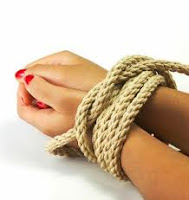A Set Up or A Hook: Perfecting the First Sentence
First sentences carry an enormous amount of
responsibility on their shoulders, and writers need to ensure they can bear the
weight.
Make every word count.
 |
| Source |
Think of the first sentence as the “host” of the
story. The reader sits down. Eager hands open up the book to the first page.
The first sentence greets the reader, setting the tone and voice of the story
they’re about to experience. The writer must convince the reader to step over
the threshold into the story. Remember, readers want instant gratification. The
minute the first sentence makes them wait for something interesting or thought
provoking, they get bored.
A first sentence, and a good host, balances between
an informative and alluring personality.
The first sentence invites a reader in and offers
information in order to anchor them in the story. It should grab the reader's
attention by engaging their curiosity. A reader supplied with the right
questions will continue to read in search for answers.
Most first sentences fall under two categories: the
set up or the hook.
SET UP
When a sentence takes on the role of “set up”, the reader is provided with details about the story. These details lay down
the foundation the story will build upon, e.g., setting, characters or conflict.
Details about the setting familiarize the reader
with the time and location, whether it’s outer space in 2065 or Alabama in
1963. The first sentence gives the reader a quick glimpse of the story world, leaving
them curious about the writer’s motive for choosing this specific time and
location. The reader now wants to know what will happen here.
When the reader cares about the characters, they’re
more likely to continue reading. So, why not let the first sentence provide
insight into the character. Whether the reader finds the character relatable or
intriguing, they will read on to uncover what happens to this person.
Another approach to lay down the foundation gives the reader a peek at the story about to unfold. It garners
attention and anchors the reader. Now, the reader is free to question and discover the
characters involved and location the plot will take place in.
 |
| Source |
A HOOK
A “hook” first sentence takes on the responsibility
of dazzling the reader long enough to keep reading. The first sentence can
shock the reader, present an absurdity or provide an abstract thought or
situation. This approach prompts the reader to say, “What?” Their disbelief compelles
them to read further to find out what it means or how it fits in the story.
Both techniques should deliver intrigue. A
successful first sentence will coax the reader to turn pages in hopes of uncovering
an explanation and/or answer to the questions set before them.
Which techniques have you been successful with in your writing?
The following
websites provide examples of great first lines and more advice:



Comments